Preparing the tunnel
Denne artikkelen er over ti år gammel og kan inneholde utdatert informasjon.
Monday 12th November - Written by Miriam Jackson
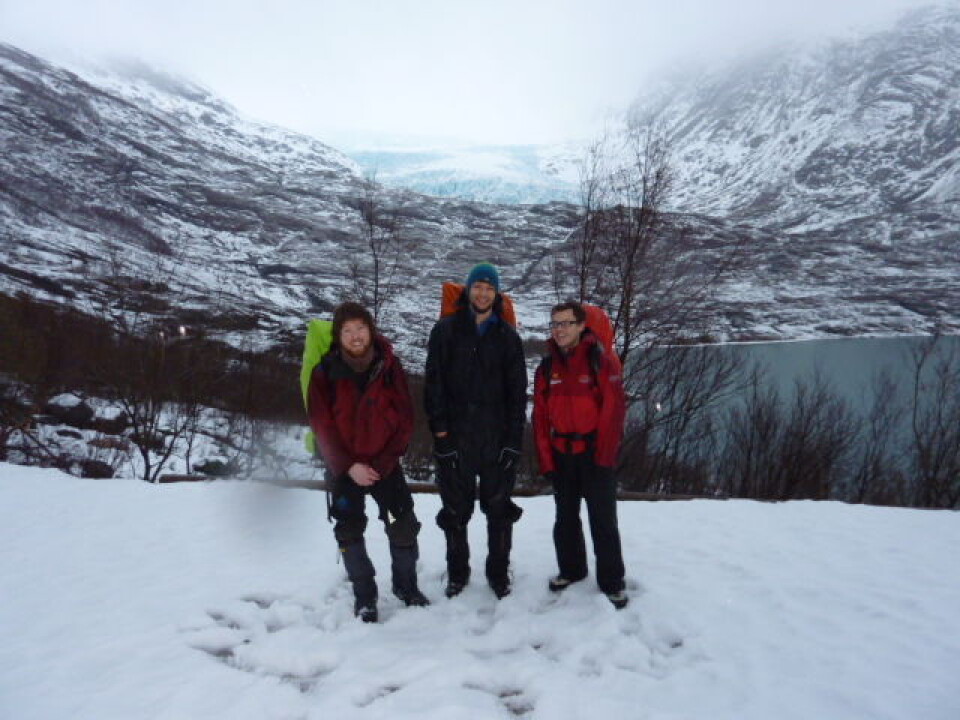
We start the day in the cabin with a quick and simple breakfast from the food supplies we have brought with us, divide up the rest of the food to carry and leave the cabin before 9 a.m. The first half an hour is spent walking along the snowy road at the side of the lake. It’s easy enough going although a little tiring trudging through the wet snow. At the end of the road we take a photo at our usual place where we have a nice view of Engabreen in the background and then start the climb up to the tunnel.
Due to the recent warm weather, there’s much less snow than I’d originally expected, but it’s wet and slippery. We are very grateful for the handrail that was installed at the lowermost part of this walk a few years ago, mainly intended for tourists going on glacier walks, but used by others going up to the tunnel or to the DNT cabin Tåkeheimen beside Engabreen.
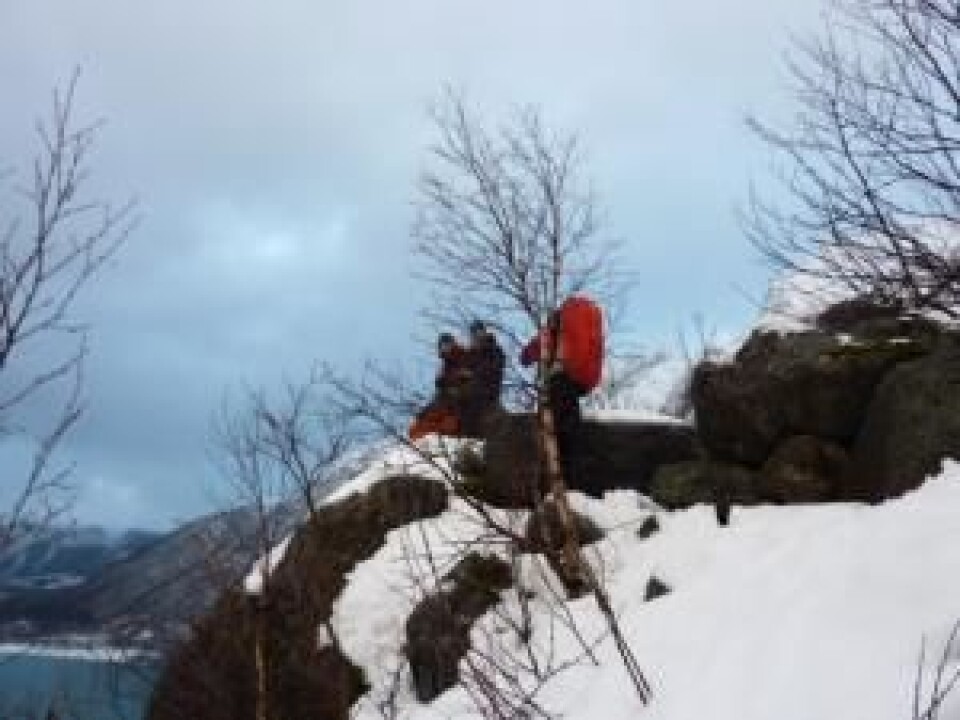
Eventually the handrail comes to an end, and we follow the red DNT markers that lead us in the right direction. It’s raining and we trudge along, with heavy backpacks and little chit-chat. More than halfway up to the tunnel, and at 300 m elevation above the lake we take a quick break for a drink of tea. The walk isn’t exactly easy, but it’s much easier than we were predicting, when we assumed we’d be contending with one metre of new snow.
As we get higher, the wind starts to blow. However, it’s nothing too severe, unlike previous occasions when I’ve had to use all my energy just to stay in one spot and not get blown down the mountain. Just over two hours after we started the walk up the hill we are at the tunnel entrance. We have gone up 500 m in elevation over a very short distance, in wind and rain, but it’s been a relatively easy walk and we have used half the time I was expecting.
We take one last look at the view, a few quick photos and enter the tunnel. Just as we go through the door, we see some blustery weather moving across the fjord towards us, but we get inside before it reaches us. We are in the tunnel before twelve midday. Now our workday can begin!
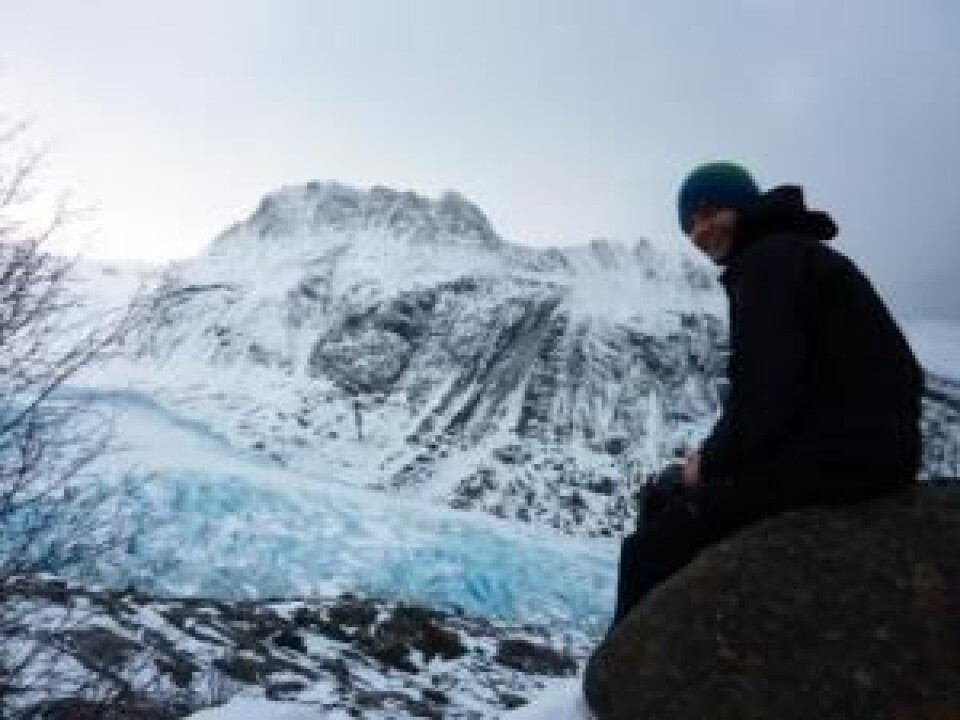
We walk the 400 m along the tunnel to the living quarters, do a safety briefing for the two members of our group, Thomas and Paul, who’ve never been here before, then eat our sandwiches and have a few minutes to unpack. By 1 p.m. we are ready to leave the living quarters and walk the 1.5 km up to the laboratory area. We have made good time in getting here and today we hope to get a substantial start in melting out a tunnel in the ice for our work.
Up at the laboratory area we finish the safety briefing, and have a quick look around the buildings and facilities but do not have time for a full tour. Before we start melting there is quite a bit of preparatory work – setting out a sump pump in the main water channel and the long, heavy hose that will bring water to our pump system. We also need to check our pumps and hot water heater and get everything turned on. Finally, we start carrying the equipment we will need – hoses, nozzle etc – up the 70+ stairs to the research shaft.
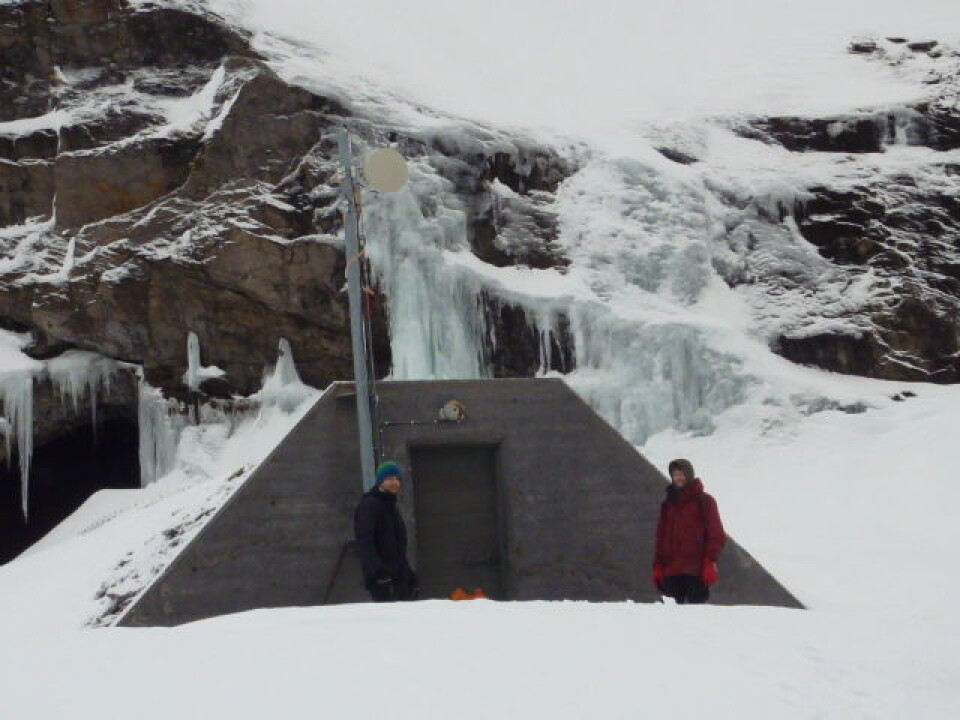
The entrance to the ice is blocked by heavy steel bars. To remove them we need to direct hot water onto the steel bars, which melts the ice behind the bars just enough that we can remove them. This takes nearly an hour, but while we are waiting for the hot water to do its job, we can have a short break and also bring up the equipment for the next part of our work.
Eventually we’re ready to remove the steel bars. Thomas and Pim use large screwdrivers, chisels and a hammer to force the bars apart, while Paul and I clean them of the sediment that has managed to squeeze into them, and stack the bars up. It goes smoothly, which isn’t always the case, and soon all of the bars are removed and we are left looking at a blank wall of ice and sediment.
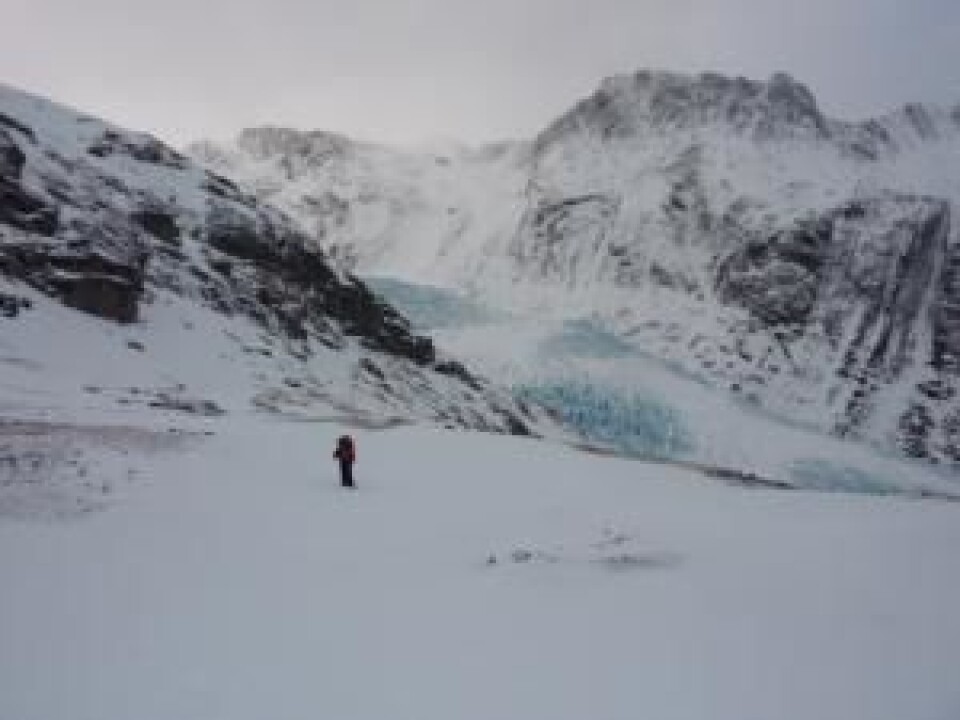
In order to melt as much and as quickly as possible, we decide to work in shifts of two people per shift. Pim and Thomas opt to take the early shift, but Pim wants to get some equipment ready so I help Thomas for the first couple of hours. The work is simple but demanding. We direct the hot water against the wall of ice, steadily moving the hose and nozzle further forward as the ice melts. There is a lot of sediment and rocks in the basal sediment, and these need to be removed otherwise they will accumulate and block the entrance on future visits. We remove the sediment either by shovelling it, and throwing it down the rock chute beside the stairway, or simply throwing the bigger rocks straight down.
Pim comes to take over and I go to the living quarters where Paul and I prepare the evening meal.
When we’ve finished making it and have eaten our share, we go to relieve Pim and Thomas. They have the early shift tomorrow morning, so are keen to get back to the living quarters to eat and go to bed. Paul and I spend the next five hours shovelling sediment and clearing the rocks, with only a short break each. I’m not sure if this is what my PhD was for, and feel a little over-qualified, but am too tired to think about it too much. By the early hours of the morning, the tunnel is making good progress and we are almost at our ‘destination’.

The plan is that we will make a channel over two of the pressure sensors that have previously been installed in the rock at the glacier bed. We will be able to record the pressure as the channel closes over the sensors. First, though, there is a short break in the melting while the late shift makes its way wearily back to the living quarters and before the early shift gets up and starts work.







